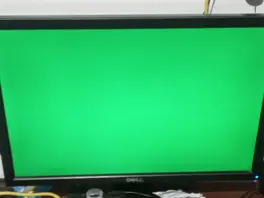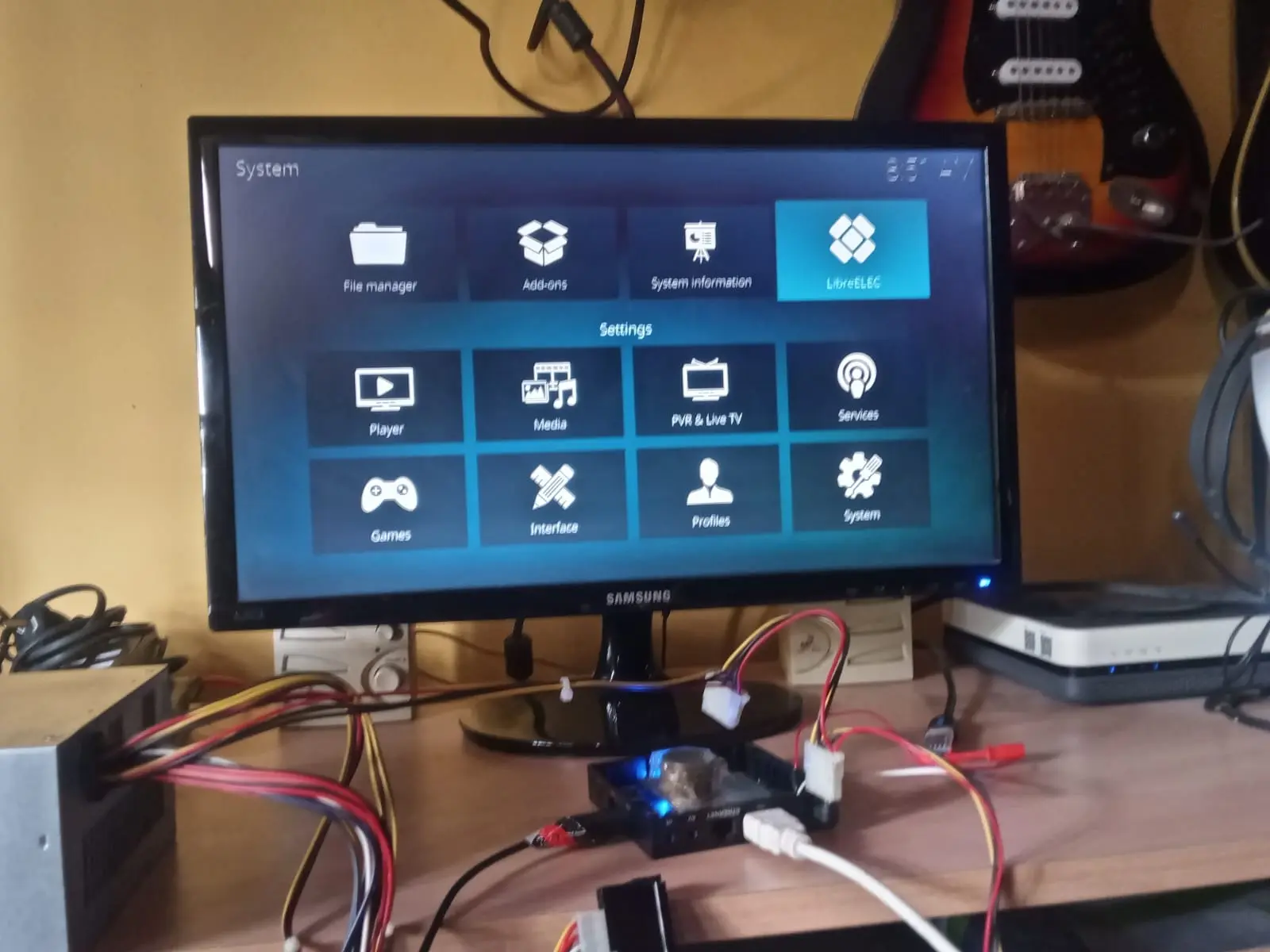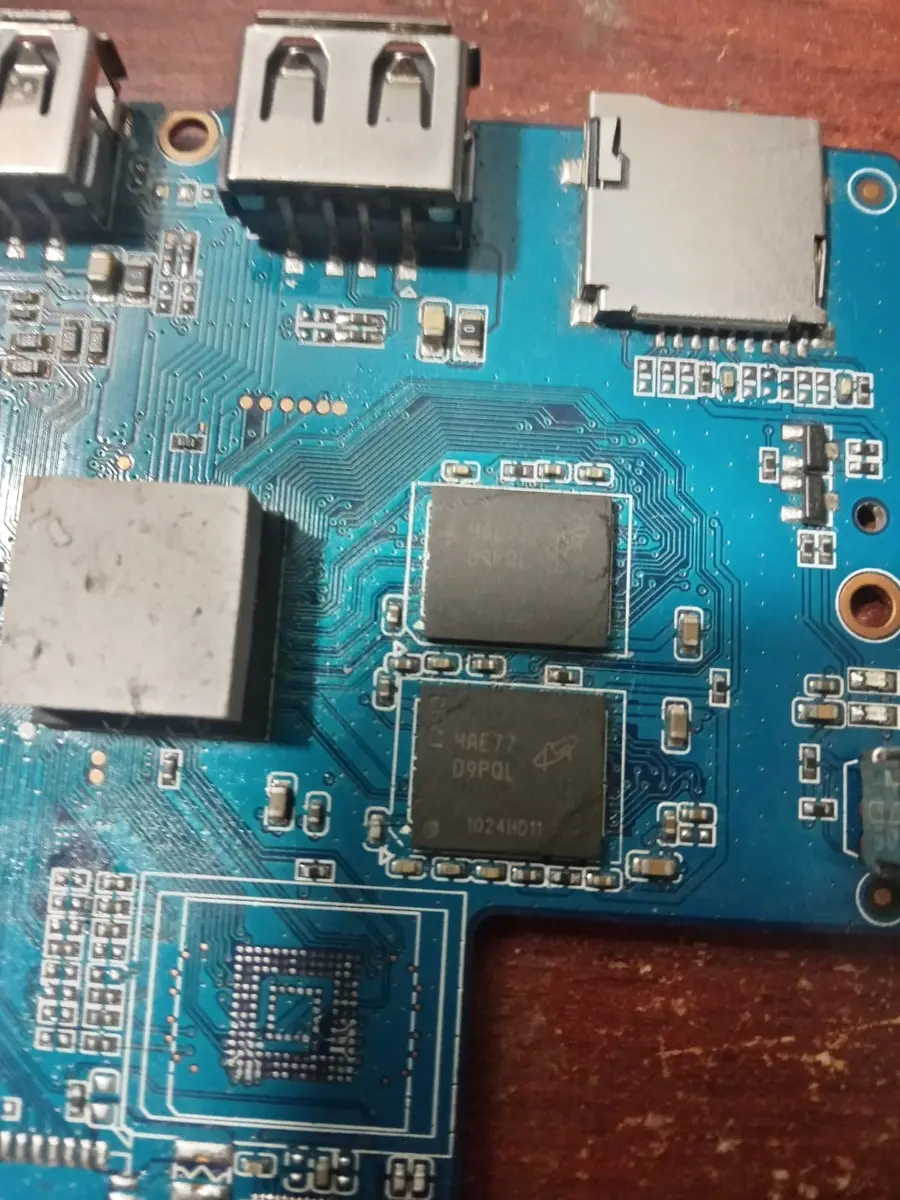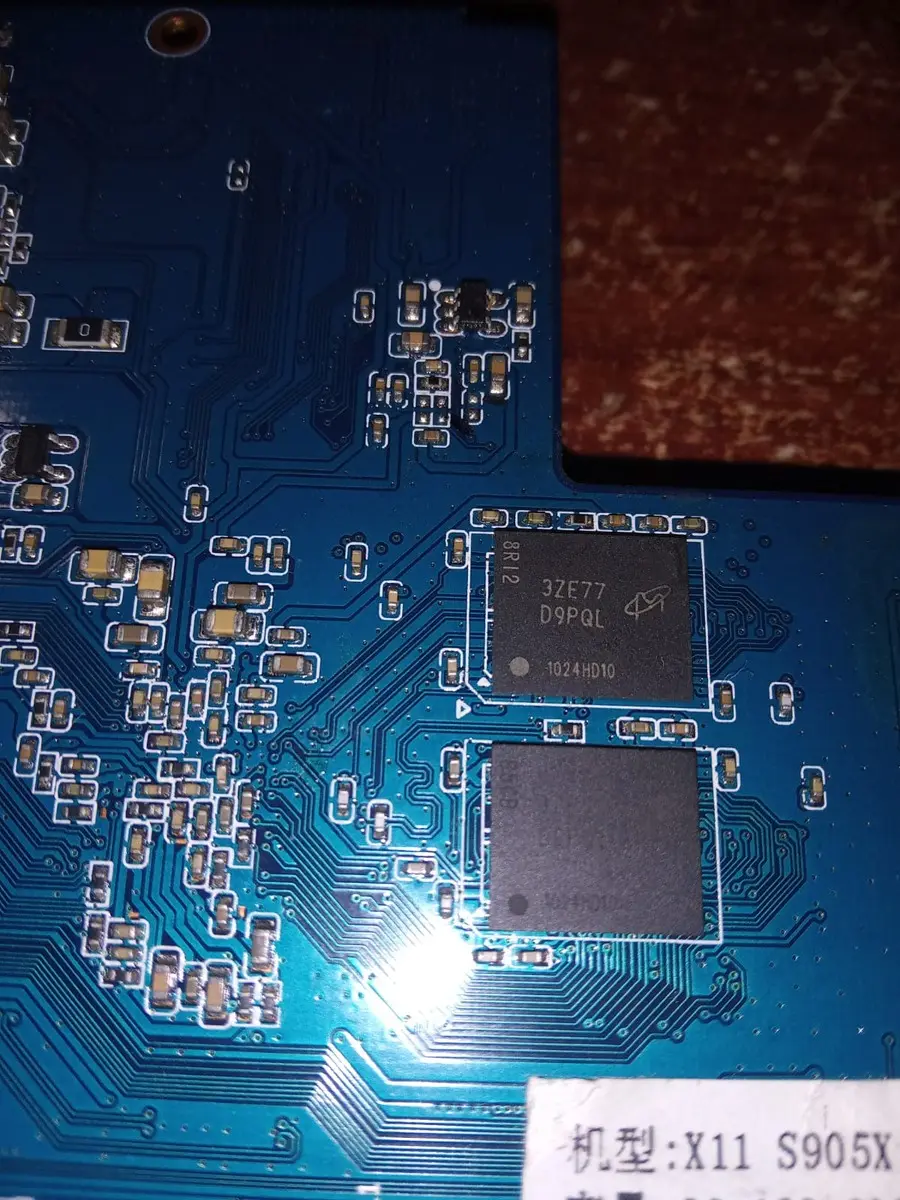GXL:BL1:9ac50e:a1974b;FEAT:ADFC31AC;POC:3;RCY:0;EMMC:800;NAND:81;SD:0;READ:0;0.0 ;CHK:0;
no sdio debug board detected
TE: 116293
BL2 Built : 14:59:36, Aug 9 2017.
gxl ge8c6a83 - xiaobo.gu@droid12
set vcck to 1120 mv
set vddee to 1000 mv
Board ID = 2
CPU clk: 1200MHz
DQS-corr enabled
DDR scramble enabled
DDR3 chl: Rank0 16bit @ 792MHz
Rank0: 2048MB-2T-11
DataBus test pass!
AddrBus test pass!
Load fip header from SD, src: 0x0000c200, des: 0x01400000, size: 0x00004000
New fip structure!
Load bl30 from SD, src: 0x00010200, des: 0x01100000, size: 0x0000d600
Load bl31 from SD, src: 0x00020200, des: 0x05100000, size: 0x0002c600
Load bl33 from SD, src: 0x00050200, des: 0x01000000, size: 0x000a0000
NOTICE: BL3-1: v1.0(release):801e730
NOTICE: BL3-1: Built : 22:09:38, Aug 10 2017
[BL31]: GXL CPU setup!
mpu_config_enable:ok
[Image: gxl_v1.1.3244-a3237e2 2017-08-16 14:01:18 hong.guo@droid04]
OPS=0xa2
cd 87 3d 41 d9 27 0 2d f1 b5 6d d2 [0.528382 Inits done]
secure task start!
high task start!
low task start!
ERROR: Error initializing runtime service opteed_fast
<debug_uart>
U-Boot 2025.07 (Oct 18 2025 - 11:50:42 +0000) khadas-vim
Model: Khadas VIM
SoC: Amlogic Meson GXL (S905W) Revision 21:b (a2:2)
DRAM: 2 GiB
Core: 178 devices, 28 uclasses, devicetree: separate
MMC: mmc@70000: 0, mmc@72000: 1, mmc@74000: 2
Loading Environment from nowhere... OK
In: serial
Out: serial
Err: serial
[BL31]: tee size: 0
[BL31]: tee size: 0
Net: eth0: ethernet@c9410000
Hit any key to stop autoboot: 0
Card did not respond to voltage select! : -110
switch to partitions #0, OK
mmc1 is current device
Scanning mmc 1:1...
Found /extlinux/extlinux.conf
Retrieving file: /extlinux/extlinux.conf
1: LibreELEC
Retrieving file: /KERNEL
append: boot=LABEL=LIBREELEC disk=LABEL=STORAGE quiet systemd.debug_shell=ttyAML 0 console=ttyAML0,115200n8 console=tty0
Retrieving file: /amlogic/meson-gxl-s905x-p212.dtb
## Booting kernel from Legacy Image at 08080000 ...
Image Name:
Image Type: AArch64 Linux Kernel Image (lzo compressed)
Data Size: 13232946 Bytes = 12.6 MiB
Load Address: 01d80000
Entry Point: 01d80000
Verifying Checksum ... OK
## Flattened Device Tree blob at 08008000
Booting using the fdt blob at 0x8008000
Working FDT set to 8008000
Uncompressing Kernel Image to 1d80000
Moving Image from 0x1d80000 to 0x1e00000, end=0x3940000
Loading Device Tree to 000000007cf49000, end 000000007cf55f98 ... OK
Working FDT set to 7cf49000
Starting kernel ...
[BL31]: tee size: 0
domain-0 init dvfs: 4
[ 0.325202] Unable to handle kernel paging request at virtual address fff0000 042f7bb58
[ 0.327531] Mem abort info:
[ 0.330289] ESR = 0x0000000096000004
[ 0.333997] EC = 0x25: DABT (current EL), IL = 32 bits
[ 0.339258] SET = 0, FnV = 0
[ 0.342276] EA = 0, S1PTW = 0
[ 0.345381] FSC = 0x04: level 0 translation fault
[ 0.350211] Data abort info:
[ 0.353057] ISV = 0, ISS = 0x00000004, ISS2 = 0x00000000
[ 0.358491] CM = 0, WnR = 0, TnD = 0, TagAccess = 0
[ 0.363494] GCS = 0, Overlay = 0, DirtyBit = 0, Xs = 0
[ 0.368755] [fff0000042f7bb58] address between user and kernel address ranges
[ 0.375830] Internal error: Oops: 0000000096000004 [#1] SMP
[ 0.381435] Modules linked in:
[ 0.384457] CPU: 2 UID: 0 PID: 0 Comm: swapper/2 Not tainted 6.17.1 #1 VOLUNT ARY
[ 0.391870] Hardware name: Amlogic Meson GXL (S905X) P212 Development Board ( DT)
[ 0.399203] pstate: 800000c5 (Nzcv daIF -PAN -UAO -TCO -DIT -SSBS BTYPE=--)
[ 0.406101] pc : class_spinlock_irqsave_constructor+0x34/0x84
[ 0.411794] lr : msg_submit+0x18/0x174
[ 0.415503] sp : ffff800080013dd0
[ 0.418780] x29: ffff800080013dd0 x28: ffff00007fba30c0 x27: 00000000000000c0
[ 0.425852] x26: ffff00007fba30c0 x25: ffff00007fba30c0 x24: 00000000000000c0
[ 0.432925] x23: 0000000000000000 x22: ffff0000042f7be8 x21: 0000000000000000
[ 0.439997] x20: ffff000008ad0530 x19: fff0000042f7ba70 x18: 0000000000000001
[ 0.447070] x17: ffff5c2b06fbf000 x16: ffff800080010000 x15: ffff0000018c4cd0
[ 0.454142] x14: 00000000000002bc x13: 00000000000003a3 x12: 0000000000000001
[ 0.461215] x11: 00000000000000c0 x10: 00000000000008f0 x9 : 00000000000000c0
[ 0.468287] x8 : ffff000001153710 x7 : ffff00007fba8e80 x6 : ffff00007fb9f5a0
[ 0.475360] x5 : 0000000000000000 x4 : 0000000000000001 x3 : 0000000000000000
[ 0.482432] x2 : 00000000000000c0 x1 : 00000000000000c0 x0 : fff0000042f7bb58
[ 0.489507] Call trace:
[ 0.491921] class_spinlock_irqsave_constructor+0x34/0x84 (P)
[ 0.497613] tx_tick+0x4c/0xb0
[ 0.500631] txdone_hrtimer+0x88/0x180
[ 0.504340] __hrtimer_run_queues+0x118/0x200
[ 0.508652] hrtimer_interrupt+0xec/0x300
[ 0.512621] arch_timer_handler_phys+0x28/0x40
[ 0.517019] handle_percpu_devid_irq+0x78/0x120
[ 0.521504] handle_irq_desc+0x30/0x5c
[ 0.525212] generic_handle_domain_irq+0x18/0x20
[ 0.529784] gic_handle_irq+0x58/0x80
[ 0.533406] call_on_irq_stack+0x30/0x50
[ 0.537288] do_interrupt_handler+0x78/0x7c
[ 0.541427] el1_interrupt+0x40/0x90
[ 0.544964] el1h_64_irq_handler+0x14/0x1c
[ 0.549018] el1h_64_irq+0x80/0x84
[ 0.552382] finish_task_switch.isra.0+0x6c/0x1f0 (P)
[ 0.557384] __schedule+0x2b8/0x82c
[ 0.560834] schedule_idle+0x1c/0x3c
[ 0.564370] do_idle+0x16c/0x280
[ 0.567562] cpu_startup_entry+0x30/0x38
[ 0.571443] secondary_start_kernel+0x124/0x15c
[ 0.575928] __secondary_switched+0x74/0x78
[ 0.580072] Code: d65f03c0 d2800003 52800024 f9800011 (885ffc01)
[ 0.586109] ---[ end trace 0000000000000000 ]---
[ 0.590679] Kernel panic - not syncing: Oops: Fatal exception in interrupt
[ 0.597492] SMP: stopping secondary CPUs
[ 0.601378] Kernel Offset: 0x23d4f7400000 from 0xffff800080000000
[ 0.607409] PHYS_OFFSET: 0x0
[ 0.610255] CPU features: 0x000000,00090000,20000000,0400400b
[ 0.615948] Memory Limit: none
[ 0.618971] ---[ end Kernel panic - not syncing: Oops: Fatal exception in int errupt ]---





